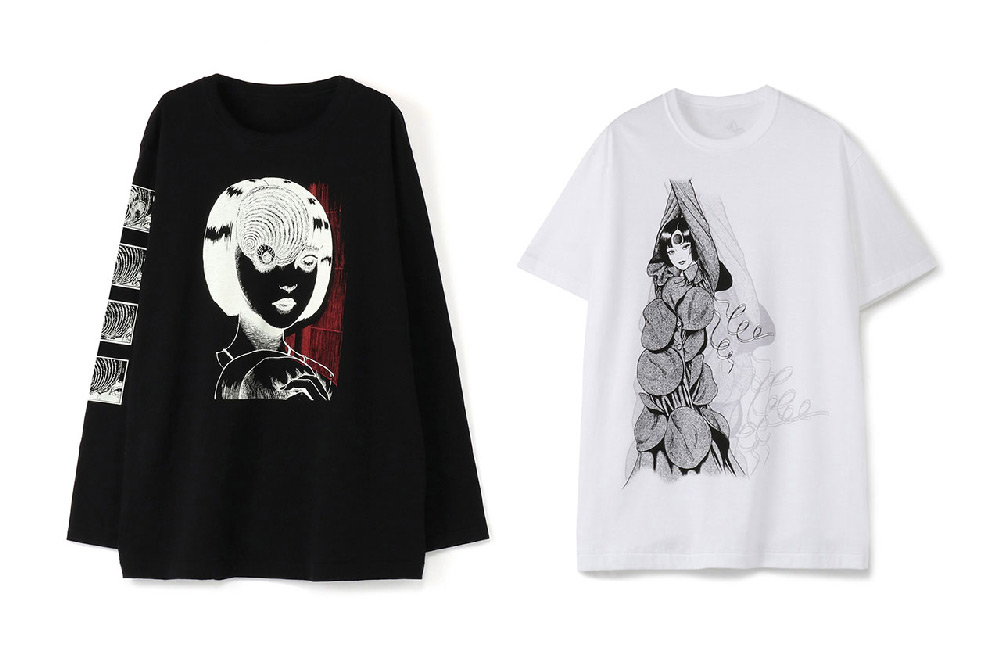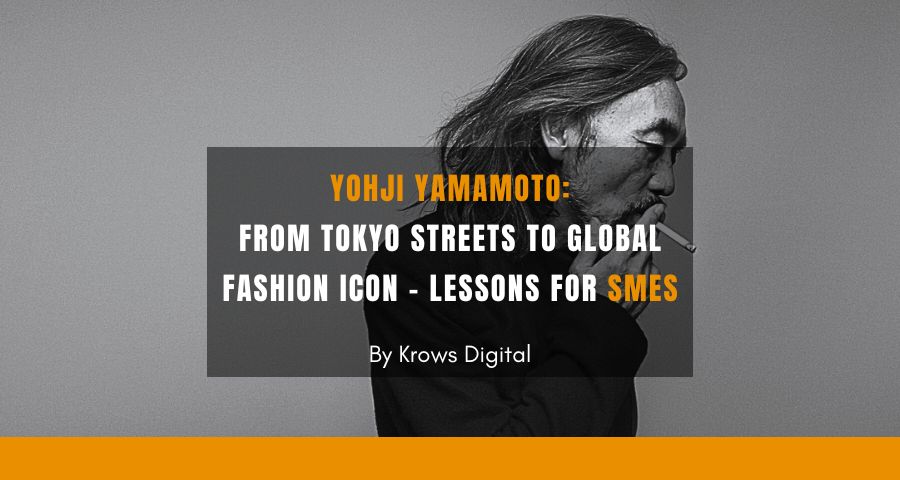Yohji Yamamoto is a name synonymous with avant-garde fashion and innovative design. His journey from humble beginnings to international success offers invaluable lessons for small and medium enterprises (SMEs) looking to make their mark in the business world. This article delves into Yamamoto’s origins, his rise to fame, and the key takeaways for SMEs aiming to carve out their own niche.

Early Life and Background

Yohji Yamamoto was born on October 3, 1943, in Tokyo, Japan. His early life was marked by the hardships of post-World War II Japan. Raised by his mother, Fumiko, a seamstress, Yamamoto was introduced to the world of fashion at a young age. Despite his initial reluctance to follow in his mother’s footsteps, preferring to study law at Keio University, Yamamoto eventually realized his passion for design and enrolled at Bunka Fashion College in Tokyo.

The Beginnings of a Fashion Icon
After graduating in 1969, Yamamoto worked in his mother’s dressmaking shop. This period was instrumental in honing his skills and understanding the intricacies of garment construction. By 1972, Yamamoto had established his own company, Y's, and began creating his first collections. His designs were starkly different from the prevailing fashion trends, characterized by an emphasis on androgyny, oversized silhouettes, and a predominantly black color palette.

Breaking into the International Scene
Yohji Yamamoto’s foray into the international fashion scene is a story of boldness, innovation, and strategic risk-taking. This crucial phase in his career not only solidified his status as a global fashion icon but also offers valuable lessons for SMEs aspiring to achieve international success.

The Paris Debut: A Defining Moment
In 1981, Yamamoto made the pivotal decision to showcase his collection in Paris, the epicenter of the fashion world. This move was both daring and strategic. At the time, Paris was dominated by haute couture and luxury fashion houses with long-standing traditions. Breaking into this market required not just exceptional talent but also a unique proposition that could capture the attention of a highly discerning audience.
Yamamoto's debut show in Paris was a stark departure from the prevailing fashion norms. His collection featured oversized silhouettes, asymmetrical designs, and a monochromatic black palette, challenging the conventional notions of beauty and fashion. The reaction was polarized; while some critics were skeptical, others were intrigued by his innovative approach. This initial mixed reception underscored the risk of introducing a radically different aesthetic but also highlighted the potential for making a significant impact.

Building a Cult Following
Despite the initial controversy, Yamamoto’s designs quickly garnered a cult following. Fashion-forward individuals and avant-garde enthusiasts were drawn to his non-conformist style, which offered a refreshing alternative to the mainstream fashion trends. His emphasis on comfort, functionality, and gender-neutral designs resonated with a growing audience that sought individuality and expression through fashion.
Yamamoto’s ability to cultivate a dedicated fan base was instrumental in his international success. By staying true to his vision and consistently delivering innovative collections, he built a loyal customer base that supported his brand through word-of-mouth and personal endorsements. For SMEs, this underscores the importance of cultivating a niche market and fostering strong relationships with early adopters and brand advocates.

Strategic Collaborations and Expansion
As Yamamoto’s reputation grew, so did his opportunities for collaboration. One of his most notable partnerships was with Adidas, resulting in the creation of the Y-3 line. This collaboration seamlessly blended Yamamoto’s avant-garde design ethos with Adidas’s sportswear expertise, creating a groundbreaking fusion of high fashion and athletic wear. The Y-3 line not only expanded Yamamoto’s reach but also introduced his brand to a broader audience that might not have been familiar with his work.
Strategic collaborations like this can be immensely beneficial for SMEs looking to enter new markets or expand their product offerings. By partnering with established brands that share complementary strengths, businesses can leverage each other’s expertise, resources, and customer bases to achieve mutual growth.

Navigating Cultural Differences
Yamamoto’s success in the international market was also a result of his keen understanding of cultural differences and consumer preferences. While his designs were deeply rooted in Japanese aesthetics, he skillfully adapted them to resonate with a global audience. This delicate balance of maintaining cultural authenticity while appealing to international tastes is crucial for SMEs looking to expand globally.
Yamamoto’s approach involved extensive research and an openness to feedback from different markets. He was able to strike a chord with diverse audiences by subtly integrating global fashion trends into his designs without compromising his unique style. For SMEs, this highlights the importance of cultural sensitivity and adaptability in international business ventures.
Resilience in the Face of Challenges
The path to international success was not without obstacles. Yohji Yamamoto faced financial difficulties, market fluctuations, and the constant pressure to innovate in a highly competitive industry. However, his resilience and ability to adapt were key factors in overcoming these challenges. He embraced change, learned from setbacks, and continually evolved his brand to stay relevant.
One significant challenge was the economic downturn in Japan during the late 1980s and early 1990s, which impacted his business operations. Yamamoto responded by diversifying his product lines, exploring new markets, and investing in technological advancements. This proactive approach enabled him to weather the storm and emerge stronger.
For SMEs, resilience is a critical attribute. The business landscape is dynamic, and challenges are inevitable. The ability to adapt, pivot, and persist in the face of adversity can make the difference between success and failure.
Embracing Digital Transformation
In the modern era, Yohji Yamamoto has embraced digital platforms to reach a wider audience and stay connected with his global fan base. From social media to e-commerce, leveraging digital tools has become essential in maintaining his brand’s relevance. By creating engaging content, interacting with followers, and offering online shopping experiences, Yamamoto has successfully navigated the digital transformation.
SMEs should recognize the importance of digital presence in today’s market. Utilizing social media, digital marketing, and e-commerce can significantly enhance visibility, customer engagement, and sales. Embracing technology and staying ahead of digital trends can provide a competitive edge in the global marketplace.

Key Elements of Yamamoto's Success
1. Unique Vision and Authenticity
Yamamoto’s success can be attributed to his unwavering commitment to his unique vision. He did not conform to the mainstream fashion trends but instead created a distinct style that was entirely his own. For SMEs, this highlights the importance of authenticity and staying true to one’s vision. Differentiation is key in a crowded market, and businesses that offer something unique are more likely to stand out.
2. Quality and Craftsmanship
Yamamoto’s designs are renowned for their exceptional quality and craftsmanship. This focus on quality helped build a loyal customer base and established his brand’s reputation. SMEs should prioritize delivering high-quality products or services, as this can lead to customer loyalty and positive word-of-mouth marketing.
3. Understanding the Market
Despite his avant-garde approach, Yohji Yamamoto understood the importance of market trends and customer preferences. He found a way to balance his unique vision with market demands, ensuring commercial viability. SMEs should conduct thorough market research to understand their target audience and adapt their offerings accordingly while maintaining their core values.

4. Strategic Branding
Yamamoto’s branding was meticulously crafted to reflect his design philosophy. From his minimalist logo to his choice of black as a signature color, every aspect of his brand was intentional and aligned with his overall vision. SMEs can learn from this by developing a strong brand identity that resonates with their audience and reflects their business values.
5. Global Perspective
While Yohji Yamamoto’s roots are deeply Japanese, his designs have universal appeal. His ability to blend traditional Japanese aesthetics with global fashion trends helped him gain international acclaim. SMEs should adopt a global perspective, looking for opportunities beyond their local markets and considering how their products or services can appeal to a wider audience.
Challenges and Resilience
Yohji Yamamoto’s journey was not without challenges. Financial difficulties, fluctuating market demands, and the pressures of staying relevant in the fast-paced fashion industry tested his resilience. However, his ability to adapt and evolve ensured his continued success. For SMEs, resilience is crucial. The business landscape is fraught with challenges, and the ability to adapt, learn from failures, and persist is vital for long-term success.
Collaborations and Innovations
Yohji Yamamoto’s collaborations with global brands such as Adidas (Y-3) and his ventures into various artistic domains (such as film and music) showcase his innovative spirit. These collaborations not only expanded his reach but also introduced his brand to new audiences. SMEs should consider strategic partnerships and collaborations to leverage complementary strengths and explore new market opportunities.
Embracing Digital Transformation
In recent years, Yohji Yamamoto has embraced digital platforms to reach a broader audience. From social media to e-commerce, leveraging digital tools has been essential in maintaining his brand’s relevance. SMEs should embrace digital transformation, utilizing online marketing, social media, and e-commerce to enhance their visibility and engage with customers.
Lessons for SMEs
- Stay True to Your Vision: Authenticity and a unique vision can set your business apart in a crowded market.
- Prioritize Quality: High-quality products or services build customer loyalty and a strong reputation.
- Understand Your Market: Conduct thorough market research to tailor your offerings to customer preferences.
- Strategic Branding: Develop a cohesive brand identity that resonates with your target audience.
- Think Globally: Look for opportunities beyond local markets to expand your reach.
- Be Resilient: Adapt to challenges and persist through difficulties to achieve long-term success.
- Innovate and Collaborate: Explore collaborations and innovate to stay relevant and expand your market.
- Embrace Digital Tools: Utilize digital platforms to enhance visibility and engage with customers.

Conclusion
Yohji Yamamoto’s journey from his humble beginnings in post-war Japan to becoming an international fashion icon is a testament to the power of vision, quality, and resilience. For SMEs, his story offers valuable insights into building a successful brand and navigating the complexities of the business world. By staying true to their unique vision, prioritizing quality, understanding the market, and embracing innovation, SMEs can carve out their own path to success, just as Yamamoto did in the world of fashion.
At Krows Digital, we specialize in helping foreign companies enter the Japanese market, drawing inspiration from stories like that of Yohji Yamamoto. Whether you're looking to build brand awareness, enhance your digital presence, or strategically position your business, our team is here to support you every step of the way. Contact us today to learn how we can help you achieve your business goals in Japan.




